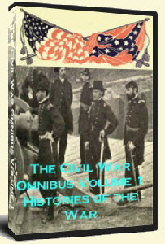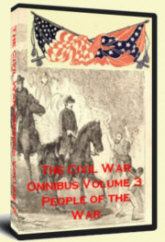The Confederados
The supporters of the Confederacy found the post-Civil War South a hostile environment indeed. For those of the planter class, the bottom rail was on top. Most were financially ruined by the war. The slaves on whom they had depended to work their land were gone, or, if they stayed, now had the right to be paid wages. Others had no need to worry about slaves to work their properties, because their properties had been seized by the Federal government or lost to creditors. For the men who had served in the Confederate Army as officers, their rights as citizens were stripped.
It is not surprising, then, that as many as 4,000-9,000 of these disenfranchised Southerners took Emperor Dom Pedro II of Brazil up on his offer to relocate to Brazil and cultivate cotton there, and despite being advised by no less than General Robert E. Lee himself against it, set out for South American in search of what they’d lost to the war.
The offer seemed lucrative enough. Dom Pedro, who was interested in expanding cotton cultivation in Brazil, offered the potential immigrants passage to South America, land grants, and tax breaks. For many, it was not just the financial benefits that relocation to Brazil offered that made the proposition so attractive; faced with submitting to Federal occupation of their homelands and governmental rule that they no doubt found oppressive, the prospect of beginning anew in Brazil seemed preferable.
It has been suggested that those who emigrated from the South to South America did so because slavery was still an institution in Brazil; however, evidence has found that few of those who relocated were slave owners.
Once settled in Brazil, most of the Confederados, as they became known, became Brazilian citizens, and settled throughout the country, but mostly near Sao Paulo, even lending their name to the city Americana.
The first Confederado whose settlement in Brazil is on record was Colonel William H. Norris, who brought around 30 Alabama families to Santa Bárbara D’Oeste to what is sometimes referred to as the Norris Colony.
It is interesting to note that Norris, like most of the men who relocated to Brazil, was a Freemason; in fact, it was through his Freemasonry contacts that Dom Pedro was able to make the offer of relocation to those who emigrated to Brazil.
Life in Brazil required an adjustment for those who emigrated. The locals were often hostile, and diseases such as smallpox and malaria plagued the emigrants. A large number of the thousands who came did not stay long.
However, those who did stay often prospered. The colonies of Confederados in Brazil were by and large successful. The Norris Colony was one of these successes; others included the plantations held by the Domm and Hastings families, who both had thousands of acres of land in cultivation of cotton and other crops, probably as much or more land as they would have had in America.
The Confederados brought much to Brazil. Their modern cotton cultivation techniques achieved Dom Pedro’s goal of increasing cultivation, but the Confederados also introduced new food crops like watermelon and pecans to the region. They also introduced farming implements that had been unknown to that time to Brazil, including the steel plow and American-style wagons. Education and religion in the areas of Brazil where Confederados settled were also affected, as public schools and colleges were created and included both females, slaves, and freedmen.
By the end of the 19th Century, many of the Confederados who’d settled in Brazil had returned to the U.S., where Reconstruction’s grip had loosened, and the scars of the war were beginning to heal. However, a number of Confederados remained in South America, adapting to the Brazilian culture, intermarrying with locals, and begetting descendants who would be more Brazilian than Confederado.
The story of the Confederados is one of the most interesting, but less-known stories of the effect of the war and Reconstruction on the South. While many of these Confederados returned home, it was not without leaving their mark on South America.


